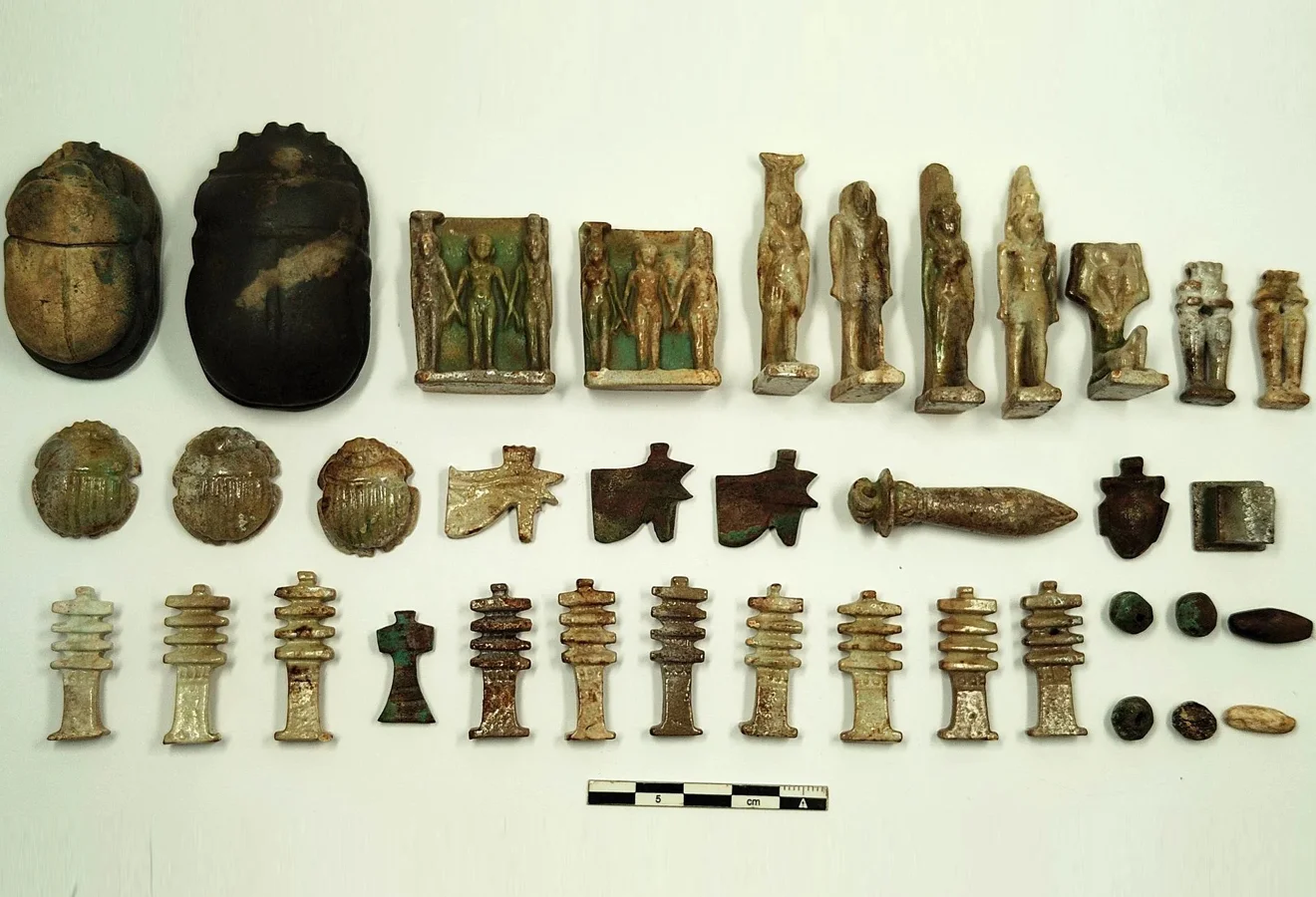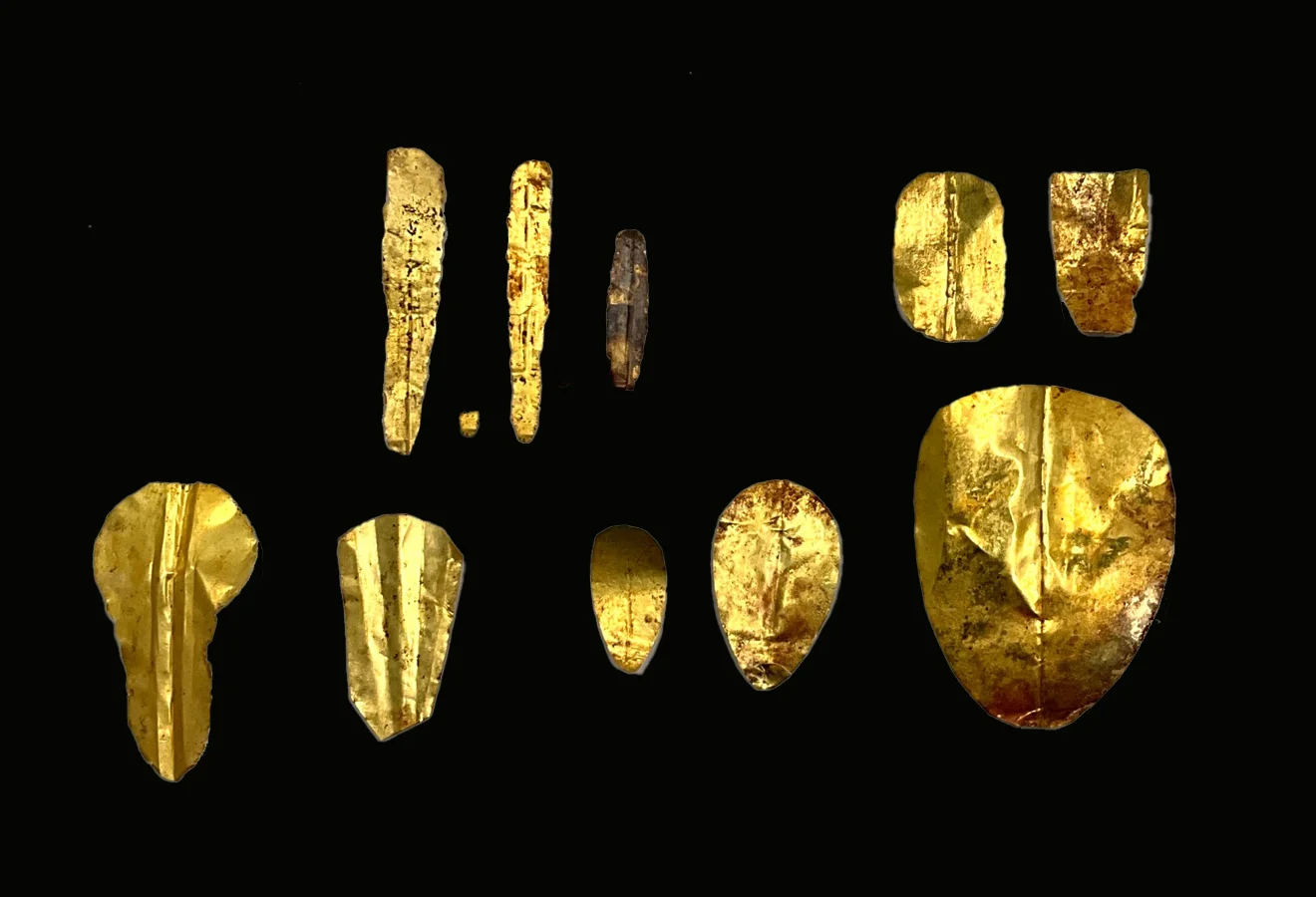Excavations at the ancient city of Oxyrhynchus near Al-Bahansa, Egypt, have uncovered 52 Ptolemaic-era mummies, some of which have gold tongues placed in their mouths.
This ritual act was intended to ensure that the dead would be able to communicate in the afterlife and speak before the court of the Ancient Egyptian god, Osiris.
The excavation, conducted by archaeologists from the University of Barcelona and the Institute of the Ancient Middle East, has been ongoing since 1992.
This season’s findings include ritual texts and depictions of deities within wall paintings, offering valuable new insights into the area’s religious practices during the Ptolemaic period (305–30 BC).
Archaeologists first found a rectangular stone burial shaft leading to a vaulted tomb containing three chambers. These chambers contained up to 300 mummies placed in a communal setting, while an adjacent shaft led to more chambers with ornately decorated hieroglyphic inscriptions and wall paintings.

According to a press statement, the latter shaft and chambers are the burial place of Wen Nefer, indicated by artwork that depicts him and his family making offerings to the gods.
The tomb’s ceiling features a celestial scene portraying the goddess Nut, depicted as a white, topless figure against a starry blue background. One particularly significant scene shows the deceased being embalmed by Anubis, where the mummy’s face is coated with a thin layer of gold.
Another tomb was uncovered still sealed, containing a sarcophagus with the mummified remains of an adult male with a gold tongue. Funerary offerings include a heart scarab amulet, four canopic jars containing the deceased’s embalmed organs, and 400 pieces of funerary ceramics.
Header Image Credit : University of Barcelona
Sources : University of Barcelona





